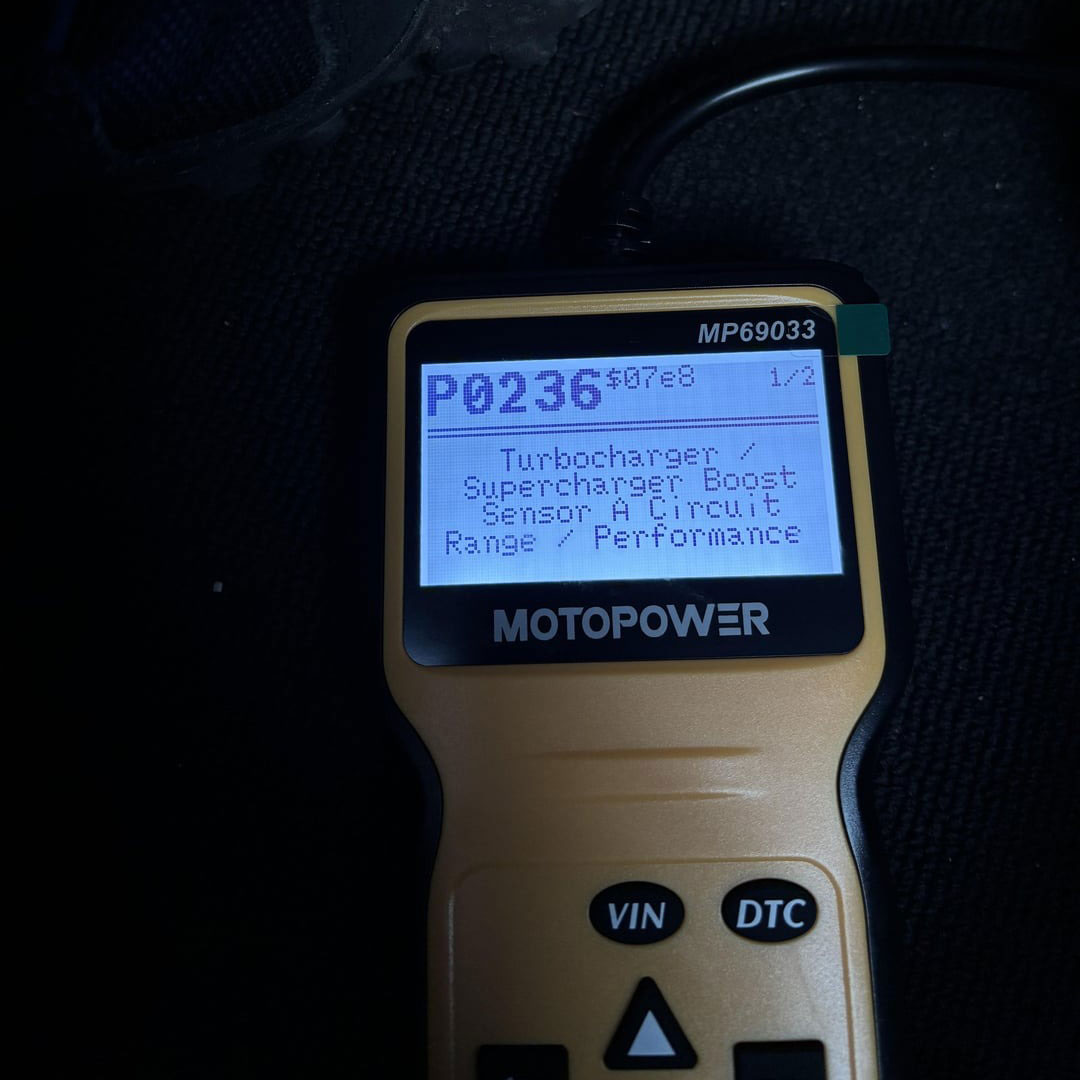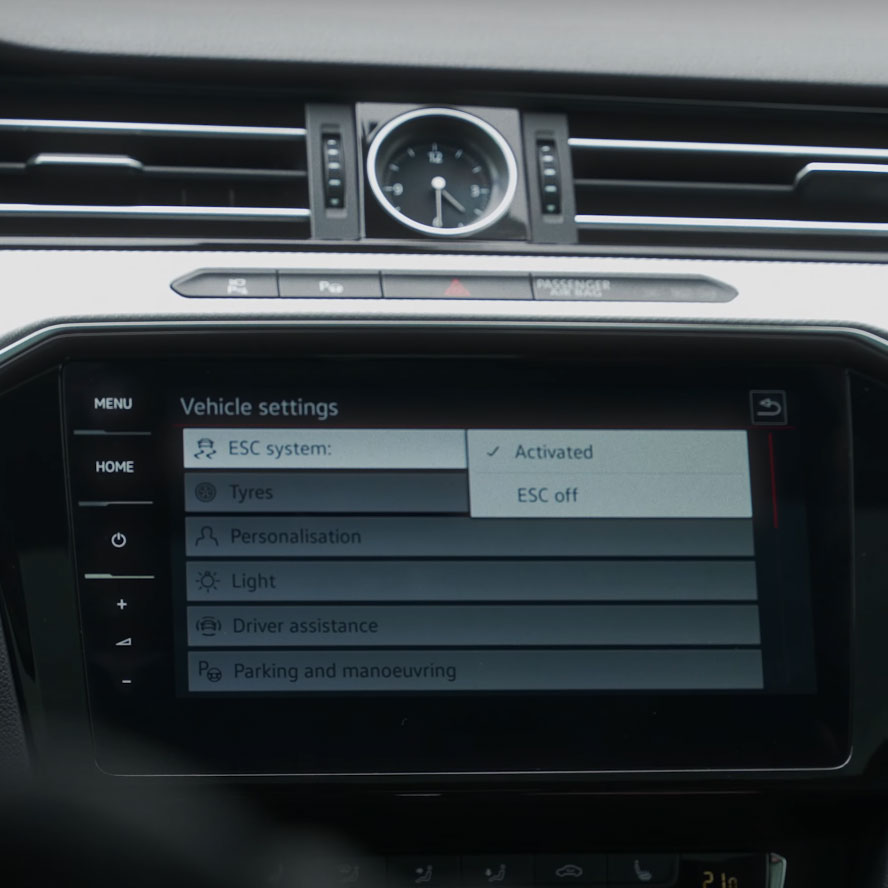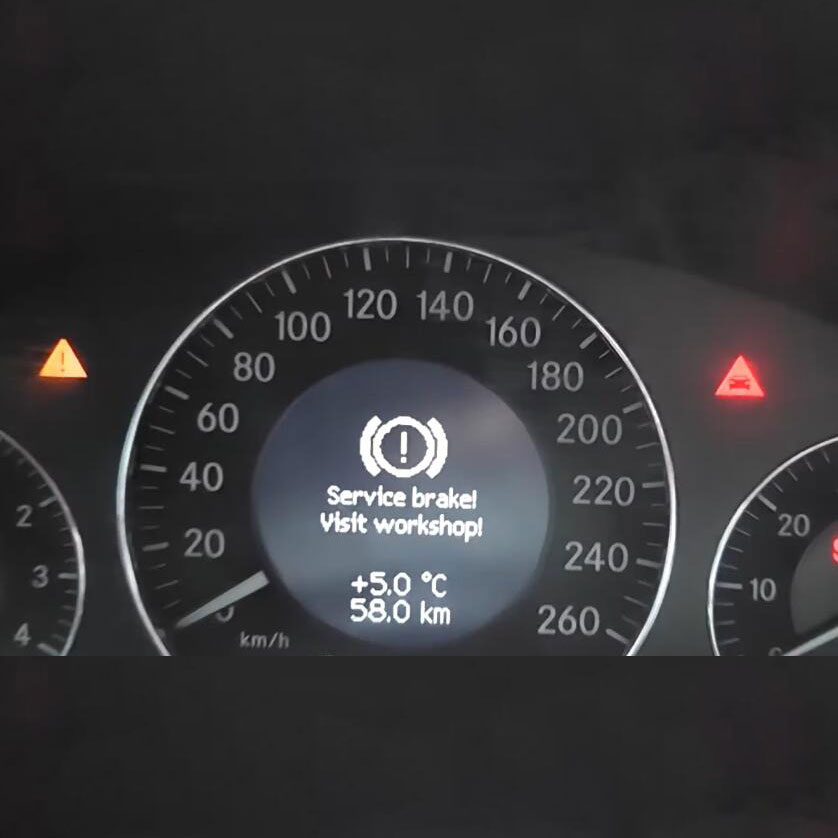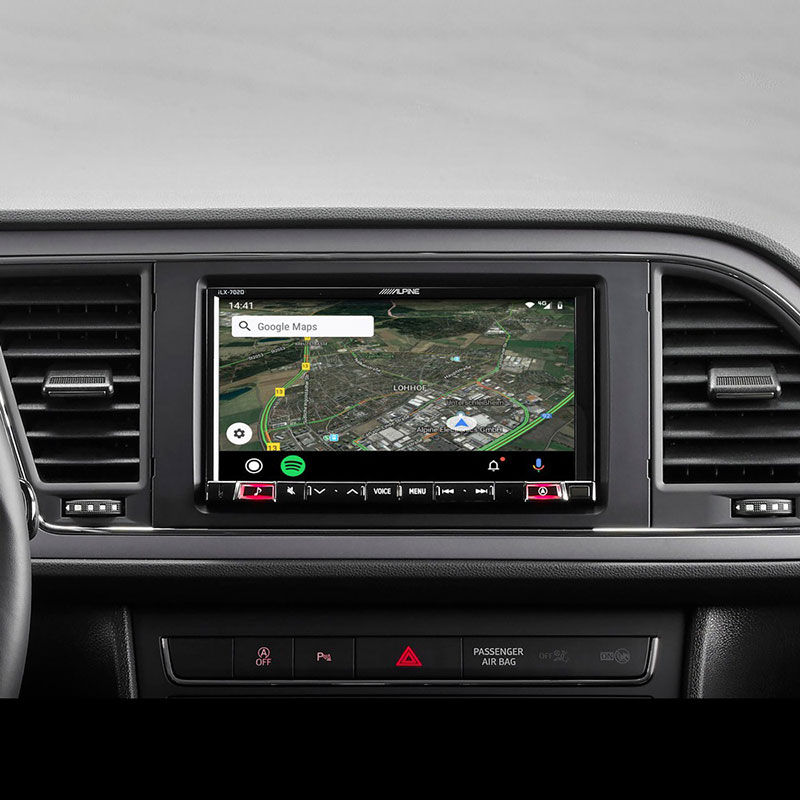
What Does Audi P0300 Code Mean and How to Fix It?
Contents
- 1. What is the Audi P0300 Code and What Does It Indicate?
- 2. What Are the Main Symptoms of an Audi with a P0300 Code?
- 3. What Are the Common Causes of the Audi P0300 Code?
- 4. How to Diagnose the Audi P0300 Code Step-by-Step?
- 5. How to Fix the Audi P0300 Code: A Detailed Guide
- 6. What Tools and Equipment Are Needed to Fix the Audi P0300 Code?
- 7. Can You Drive an Audi with a P0300 Code?
- 8. How Much Does It Typically Cost to Fix the Audi P0300 Code?
- 9. How to Prevent the Audi P0300 Code from Recurring?
- 10. Why Choose AutoExplain.com for Your Audi P0300 Code Issues?
- FAQ About Audi P0300 Code
- 1. What does the Audi P0300 code specifically mean?
- 2. Can I drive my Audi with a P0300 code without causing damage?
- 3. What are the most common causes of the P0300 code in an Audi?
- 4. How do I diagnose the P0300 code on my Audi?
- 5. How can I fix the P0300 code on my Audi?
- 6. How much does it typically cost to fix the P0300 code on an Audi?
- 7. Can a faulty O2 sensor cause the P0300 code on my Audi?
- 8. What tools do I need to diagnose and fix the P0300 code on my Audi?
- 9. How can I prevent the P0300 code from recurring in my Audi?
- 10. Why should I choose AutoExplain.com for my Audi P0300 code issues?
The Audi P0300 Code signifies a random or multiple cylinder misfire detected by your car’s computer. Addressing this promptly is crucial to prevent potential engine damage, and AutoExplain.com offers expert remote support to diagnose and resolve this issue efficiently. With AutoExplain.com, you gain access to specialized diagnostic tools and expert guidance, ensuring your Audi returns to peak performance swiftly.
1. What is the Audi P0300 Code and What Does It Indicate?
The Audi P0300 code indicates that the engine control unit (ECU) has detected a random or multiple misfire events occurring in one or more cylinders. A misfire happens when one or more of the engine’s cylinders isn’t firing correctly. It means that the combustion process inside the cylinder is not happening as it should. This can be due to a variety of factors affecting the air-fuel mixture, compression, or ignition. The Engine Control Unit (ECU) monitors the engine’s rotation. When it detects unexpected changes, it triggers the P0300 code, signaling misfires. Understanding what the P0300 code means is the first step in effectively diagnosing and resolving the underlying issue in your Audi.
2. What Are the Main Symptoms of an Audi with a P0300 Code?
Several symptoms can indicate that your Audi is experiencing a P0300 misfire condition. Recognizing these signs early can help prevent further damage. Here are the main symptoms:
- Rough Idling: The engine vibrates excessively or runs unevenly when the vehicle is stationary.
- Decreased Engine Performance: Noticeable reduction in power and acceleration.
- Hesitation During Acceleration: The engine stumbles or hesitates when you press the accelerator pedal.
- Check Engine Light: The malfunction indicator lamp (MIL) illuminates on the dashboard.
- Unusual Noises: Knocking or popping sounds coming from the engine.
- Poor Fuel Economy: A significant drop in miles per gallon (MPG).
- Smell of Fuel: Unburnt fuel may be noticeable, indicating incomplete combustion.
- Engine Stalling: The engine may suddenly stop running.
If you observe one or more of these symptoms, it is essential to address the issue promptly to avoid potential long-term damage to your Audi’s engine. For expert assistance in diagnosing and resolving these issues, contact AutoExplain.com for remote support.
3. What Are the Common Causes of the Audi P0300 Code?
The Audi P0300 code can stem from a variety of underlying issues. Identifying these root causes is crucial for an effective repair. Here are some common causes:
- Ignition System Issues:
- Worn or Faulty Spark Plugs: Degraded spark plugs can fail to ignite the air-fuel mixture effectively.
- Defective Ignition Coils: Weak or failing ignition coils can result in insufficient spark energy.
- Spark Plug Wires: Damaged or deteriorated wires can cause a loss of spark.
- Fuel System Problems:
- Clogged or Dirty Fuel Injectors: Blocked injectors disrupt the proper fuel spray pattern.
- Weak or Failing Fuel Pump: Insufficient fuel pressure can lead to a lean air-fuel mixture.
- Fuel Filter: A clogged fuel filter restricts fuel flow to the engine.
- Vacuum Leaks:
- Intake Manifold Gaskets: Leaks allow unmetered air to enter the engine.
- Vacuum Hoses: Cracked or disconnected hoses can disrupt the air-fuel mixture.
- Engine Mechanical Issues:
- Low Compression: Worn piston rings or valves can reduce cylinder compression.
- Timing Issues: Improper timing can affect the engine’s firing order and combustion efficiency.
- Cylinder Head Gasket Failure: Leaks between cylinders or into the cooling system.
- Exhaust System Leaks:
- Exhaust Manifold Gaskets: Leaks introduce air into the exhaust stream.
- Cracked Exhaust Pipes: Allows exhaust gases to escape prematurely.
- Sensor Malfunctions:
- Mass Air Flow (MAF) Sensor: Inaccurate readings can lead to improper air-fuel mixtures.
- Oxygen (O2) Sensors: Faulty sensors can provide incorrect feedback to the ECU.
- Catalytic Converter Issues:
- Clogged Converter: Restricts exhaust flow, leading to back pressure and misfires.
- Engine Control Unit (ECU) Problems:
- Software Glitches: Can cause incorrect signals or misinterpretations.
- Hardware Failures: Rare, but can result in misfires due to faulty ECU operations.
Understanding these potential causes can help streamline the diagnostic process. If you need expert assistance, AutoExplain.com is available via WhatsApp at +1(936)2896695 or email at [email protected] to provide comprehensive remote support.
4. How to Diagnose the Audi P0300 Code Step-by-Step?
Diagnosing the P0300 code in your Audi requires a systematic approach to pinpoint the root cause. Here’s a step-by-step guide:
-
Initial Scan:
- Use an OBD-II scanner to read the diagnostic trouble codes (DTCs) stored in the ECU.
- Record all codes present, as additional codes can provide valuable context.
- Clear the codes and test drive the vehicle to see if the P0300 code returns.
-
Visual Inspection:
- Check for any obvious signs of damage or wear.
- Inspect all vacuum hoses for cracks, disconnections, or leaks.
- Examine the spark plug wires for damage or corrosion.
- Look for any fuel leaks around the fuel injectors and fuel lines.
-
Spark Plug Inspection:
- Remove and inspect each spark plug.
- Check for signs of wear, fouling, or damage.
- Compare the condition of the spark plugs across all cylinders.
- Replace any plugs that are worn or damaged.
-
Ignition Coil Testing:
- Use a multimeter to test the resistance of each ignition coil.
- Compare the readings to the manufacturer’s specifications.
- Swap ignition coils between cylinders to see if the misfire follows the coil.
- Replace any coils that are out of specification.
-
Fuel Injector Testing:
- Use a stethoscope to listen to each fuel injector and ensure they are clicking.
- Check the resistance of each fuel injector using a multimeter.
- Compare the readings to the manufacturer’s specifications.
- Consider having the fuel injectors professionally cleaned or replaced if necessary.
-
Compression Testing:
- Perform a compression test on each cylinder to check for mechanical issues.
- Compare the compression readings across all cylinders.
- Low compression in one or more cylinders indicates potential issues with piston rings, valves, or cylinder head gasket.
-
Vacuum Leak Testing:
- Use a smoke machine to introduce smoke into the intake system.
- Look for smoke escaping from vacuum lines, intake manifold gaskets, or other potential leak points.
- Spray carburetor cleaner around intake gaskets and vacuum lines while the engine is running. If the engine speed changes, it indicates a vacuum leak.
-
Sensor Testing:
- Use a scan tool to monitor the readings from the MAF sensor and O2 sensors.
- Ensure the sensors are providing accurate and consistent data.
- Replace any sensors that are faulty or providing incorrect readings.
-
Timing Verification:
- Check the engine timing to ensure it is within the manufacturer’s specified range.
- Adjust the timing if necessary.
-
Catalytic Converter Inspection:
- Check for excessive heat or unusual noises coming from the catalytic converter.
- A clogged catalytic converter can cause back pressure, leading to misfires.
-
ECU Diagnostic:
- Inspect the ECU for any signs of damage or corrosion.
- Check for software updates or known issues with the ECU.
- Consider consulting with a professional technician to diagnose and repair any ECU-related problems.
By following these steps, you can systematically diagnose the cause of the P0300 code in your Audi. For expert remote assistance, contact AutoExplain.com via WhatsApp at +1(936)2896695 or email at [email protected].
5. How to Fix the Audi P0300 Code: A Detailed Guide
Once you’ve diagnosed the cause of the P0300 code, the next step is to implement the necessary repairs. Here’s a detailed guide on how to fix the most common issues:
-
Replacing Worn or Faulty Spark Plugs:
- Procedure:
- Disconnect the ignition coil from the spark plug.
- Use a spark plug socket to remove the old spark plug.
- Inspect the new spark plug and adjust the gap to the manufacturer’s specifications.
- Install the new spark plug and torque it to the specified value.
- Reconnect the ignition coil.
- Repeat for all spark plugs.
- Why: Worn spark plugs can cause weak or inconsistent spark, leading to misfires.
- Procedure:
-
Replacing Defective Ignition Coils:
- Procedure:
- Disconnect the electrical connector from the ignition coil.
- Remove the bolts securing the ignition coil to the engine.
- Remove the old ignition coil.
- Install the new ignition coil and secure it with the bolts.
- Reconnect the electrical connector.
- Why: Faulty ignition coils can fail to provide sufficient spark energy.
- Procedure:
-
Cleaning or Replacing Clogged Fuel Injectors:
- Procedure:
- Remove the fuel rail and fuel injectors.
- Use a fuel injector cleaning kit to clean the injectors.
- If cleaning doesn’t resolve the issue, replace the fuel injectors.
- Reinstall the fuel rail and fuel injectors.
- Why: Clogged injectors disrupt the proper fuel spray pattern.
- Procedure:
-
Repairing Vacuum Leaks:
- Procedure:
- Locate the vacuum leak using a smoke machine or carburetor cleaner.
- Replace any cracked or disconnected vacuum hoses.
- Replace intake manifold gaskets if they are leaking.
- Why: Vacuum leaks allow unmetered air to enter the engine.
- Procedure:
-
Addressing Low Compression Issues:
- Procedure:
- If low compression is due to worn piston rings, consider an engine rebuild or replacement.
- If low compression is due to valve issues, perform a valve job or replace the cylinder head.
- If the cylinder head gasket is leaking, replace it with a new one.
- Why: Low compression reduces cylinder pressure.
- Procedure:
-
Correcting Timing Issues:
- Procedure:
- Check the engine timing using a timing light.
- Adjust the timing as necessary to match the manufacturer’s specifications.
- Ensure the timing belt or chain is in good condition and properly aligned.
- Why: Improper timing can affect the engine’s firing order and combustion efficiency.
- Procedure:
-
Replacing Faulty Sensors:
- Procedure:
- Disconnect the electrical connector from the sensor.
- Remove the sensor from the engine.
- Install the new sensor and reconnect the electrical connector.
- Why: Inaccurate sensor readings can lead to improper air-fuel mixtures.
- Procedure:
-
Clearing a Clogged Catalytic Converter:
- Procedure:
- In some cases, a catalytic converter can be cleaned using a catalytic converter cleaner.
- If the converter is severely clogged, it may need to be replaced.
- Why: A clogged catalytic converter restricts exhaust flow, leading to back pressure and misfires.
- Procedure:
-
Addressing ECU Problems:
- Procedure:
- Check for software updates for the ECU.
- If the ECU is faulty, it may need to be replaced or reprogrammed by a professional technician.
- Why: Software glitches or hardware failures can cause misfires due to faulty ECU operations.
- Procedure:
After completing the necessary repairs, clear the P0300 code using an OBD-II scanner and test drive the vehicle to ensure the issue is resolved. For expert remote assistance, contact AutoExplain.com via WhatsApp at +1(936)2896695 or email at [email protected].
6. What Tools and Equipment Are Needed to Fix the Audi P0300 Code?
Fixing the Audi P0300 code often requires a variety of tools and equipment to properly diagnose and repair the underlying issues. Here’s a list of essential items:
- OBD-II Scanner: To read and clear diagnostic trouble codes (DTCs).
- Multimeter: For testing electrical components such as ignition coils and fuel injectors.
- Spark Plug Socket: To remove and install spark plugs.
- Socket Set: For removing and installing various engine components.
- Wrench Set: For tightening and loosening bolts and nuts.
- Screwdriver Set: Both Phillips head and flathead screwdrivers.
- Torque Wrench: To ensure proper tightening of bolts and nuts to the manufacturer’s specifications.
- Compression Tester: To measure cylinder compression.
- Vacuum Tester: To check for vacuum leaks.
- Smoke Machine: To locate vacuum leaks.
- Fuel Injector Cleaning Kit: For cleaning fuel injectors.
- Timing Light: To check and adjust engine timing.
- Stethoscope: To listen to fuel injectors and other engine components.
- Jack and Jack Stands: To safely lift and support the vehicle.
- Wheel Chocks: To prevent the vehicle from rolling.
- Protective Gear: Gloves, safety glasses, and a face mask.
Having these tools and equipment on hand will enable you to efficiently diagnose and repair the causes of the P0300 code in your Audi. If you need expert remote assistance, contact AutoExplain.com via WhatsApp at +1(936)2896695 or email at [email protected].
7. Can You Drive an Audi with a P0300 Code?
While it is technically possible to drive an Audi with a P0300 code, it is generally not recommended. Driving with a misfire can lead to several potential problems:
- Engine Damage: Continuous misfires can cause damage to the engine components, such as the pistons, valves, and cylinder head.
- Catalytic Converter Damage: Unburnt fuel entering the catalytic converter can cause it to overheat and fail.
- Reduced Fuel Economy: Misfires reduce the efficiency of combustion, leading to poor fuel economy.
- Poor Performance: The engine may run rough, hesitate during acceleration, and lack power.
- Increased Emissions: Misfires increase the amount of harmful emissions released into the atmosphere.
It is best to address the P0300 code as soon as possible to avoid these potential issues. If you must drive the vehicle, do so with caution and have it diagnosed and repaired by a qualified technician at your earliest convenience. AutoExplain.com offers expert remote support to help diagnose and resolve this issue efficiently. Contact us via WhatsApp at +1(936)2896695 or email at [email protected] for assistance.
8. How Much Does It Typically Cost to Fix the Audi P0300 Code?
The cost to fix an Audi P0300 code can vary widely depending on the underlying cause of the misfire and the extent of the repairs needed. Here are some typical cost ranges for common repairs:
- Spark Plug Replacement: $50 – $200
- Ignition Coil Replacement: $100 – $400 per coil
- Fuel Injector Cleaning or Replacement: $200 – $800
- Vacuum Leak Repair: $100 – $500
- Compression Issues (Piston Rings, Valves): $1,000 – $5,000
- Timing Issues: $500 – $2,000
- Sensor Replacement (MAF, O2): $100 – $500
- Catalytic Converter Replacement: $500 – $2,000
- ECU Repair or Replacement: $500 – $2,500
These are just estimates, and the actual cost may vary based on the specific make and model of your Audi, the labor rates at your chosen repair shop, and the quality of the replacement parts used. To get a more accurate estimate, it’s best to have your vehicle diagnosed by a qualified technician.
AutoExplain.com provides expert remote diagnostic services to help you identify the cause of the P0300 code and estimate the cost of repairs accurately. Contact us via WhatsApp at +1(936)2896695 or email at [email protected] for assistance.
9. How to Prevent the Audi P0300 Code from Recurring?
Preventing the Audi P0300 code from recurring involves regular maintenance and proactive care of your vehicle. Here are some key steps to help prevent misfires and keep your Audi running smoothly:
- Regular Spark Plug Maintenance:
- Replace spark plugs according to the manufacturer’s recommended interval.
- Inspect spark plugs regularly for wear, fouling, or damage.
- Maintain Ignition System:
- Check ignition coils for proper function and replace them as needed.
- Inspect spark plug wires for damage or corrosion.
- Fuel System Care:
- Use high-quality fuel and fuel additives to keep fuel injectors clean.
- Replace the fuel filter regularly to ensure proper fuel flow.
- Check for Vacuum Leaks:
- Inspect vacuum hoses regularly for cracks or disconnections.
- Replace any damaged vacuum hoses promptly.
- Regular Engine Maintenance:
- Perform regular oil changes and other scheduled maintenance tasks.
- Check and adjust engine timing as needed.
- Monitor Engine Performance:
- Pay attention to any changes in engine performance, such as rough idling or hesitation during acceleration.
- Address any issues promptly to prevent them from escalating.
By following these preventive measures, you can reduce the likelihood of the P0300 code recurring and keep your Audi in optimal condition. For expert advice and remote support, contact AutoExplain.com via WhatsApp at +1(936)2896695 or email at [email protected].
10. Why Choose AutoExplain.com for Your Audi P0300 Code Issues?
Choosing AutoExplain.com for your Audi P0300 code issues provides numerous benefits, ensuring your vehicle receives expert care and efficient solutions. Here’s why you should choose us:
- Expert Technicians: Access to highly skilled and experienced automotive technicians specializing in Audi vehicles.
- Remote Diagnostic Services: Convenient remote diagnostic services to accurately identify the cause of the P0300 code without needing to visit a repair shop.
- Cost-Effective Solutions: Avoid unnecessary repair costs with precise diagnostics and targeted solutions.
- Quick Turnaround: Get your Audi back on the road faster with efficient remote support and guidance.
- Comprehensive Support: Assistance with a wide range of automotive issues, including engine diagnostics, electrical problems, and more.
- Personalized Service: Tailored solutions to meet your specific needs and concerns.
- Latest Technology: Use advanced diagnostic tools and techniques to ensure accurate and effective repairs.
- Reliable Advice: Trustworthy advice and recommendations to keep your Audi running smoothly and prevent future issues.
AutoExplain.com is committed to providing top-notch remote automotive support, ensuring your Audi receives the best possible care. Contact us today via WhatsApp at +1(936)2896695 or email at [email protected] to experience the AutoExplain.com difference. Our office is located at 1500 N Grant ST Sten Denver, CO 80203.
FAQ About Audi P0300 Code
1. What does the Audi P0300 code specifically mean?
The Audi P0300 code indicates a random or multiple cylinder misfire has been detected by the car’s computer, meaning one or more cylinders are not firing properly.
2. Can I drive my Audi with a P0300 code without causing damage?
It’s not recommended, as driving with a P0300 code can lead to potential engine damage, catalytic converter issues, and reduced fuel economy.
3. What are the most common causes of the P0300 code in an Audi?
Common causes include worn spark plugs, faulty ignition coils, clogged fuel injectors, vacuum leaks, and low compression.
4. How do I diagnose the P0300 code on my Audi?
Start with an OBD-II scanner to read the code, then visually inspect the engine components and test the spark plugs, ignition coils, and fuel injectors.
5. How can I fix the P0300 code on my Audi?
Fixes may include replacing worn spark plugs, defective ignition coils, cleaning fuel injectors, repairing vacuum leaks, or addressing low compression issues.
6. How much does it typically cost to fix the P0300 code on an Audi?
The cost varies depending on the cause, but it can range from $50 for spark plug replacement to several thousand dollars for more extensive engine repairs.
7. Can a faulty O2 sensor cause the P0300 code on my Audi?
Yes, a faulty O2 sensor can provide incorrect feedback to the ECU, leading to improper air-fuel mixtures and misfires.
8. What tools do I need to diagnose and fix the P0300 code on my Audi?
Tools needed include an OBD-II scanner, multimeter, spark plug socket, socket set, wrench set, compression tester, and vacuum tester.
9. How can I prevent the P0300 code from recurring in my Audi?
Preventive measures include regular spark plug maintenance, fuel system care, checking for vacuum leaks, and performing regular engine maintenance.
10. Why should I choose AutoExplain.com for my Audi P0300 code issues?
AutoExplain.com offers expert technicians, remote diagnostic services, cost-effective solutions, quick turnaround, and comprehensive support for your Audi’s needs.
Don’t let a P0300 code keep your Audi off the road. Contact AutoExplain.com today via WhatsApp at +1(936)2896695 or email at AutoExplain[email protected] for expert assistance and get your Audi running smoothly again. Our office is located at 1500 N Grant ST Sten Denver, CO 80203.


How to Deactivate ESC in Volkswagen, Audi, Skoda, or SEAT

Mercedes Benz ‘Service Brake Visit Workshop’ Warning? Here’s What Dealers Don’t Tell You!

How to Perform Seat Navigation Update? – A Comprehensive Guide for Technicians






